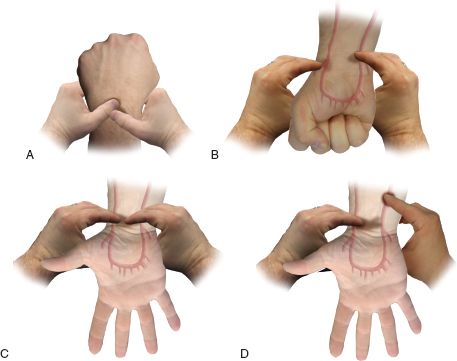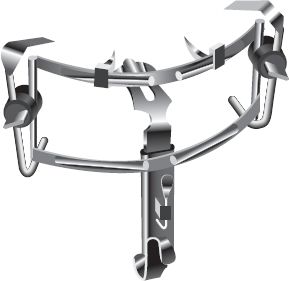FIGURE 6.1 An elevated radial forearm free flap.
HISTORY
The second most common site of oral cancer is in the mobile portion of the oral tongue, anterior to the circumvallate line. Patients with cancer of the oral tongue may present with odynophagia, often with referred otalgia, with or without dysarthria, and with dysgeusia. The cancer typically manifests as a noduloulcerative lesion affecting the lateral border of the tongue as the most common subsite with associated metastasis to levels 1, 2, 3, and occasionally 4. There is often an associated history of the long-term habits of smoking cigarettes, using smokeless tobacco, and drinking alcohol. Additional pertinent risk factors include human papillomavirus infection, chronic inflammatory conditions affecting the mucosal surfaces such as lichen planus, long-standing erythroleukoplakia, and poor oral hygiene.
PHYSICAL EXAMINATION
A complete examination of the head and neck should be carried out with a combination of inspection, palpation, indirect mirror examination, and direct endoscopy. Careful visualization for any irregularities of the mucosal lining of the upper aerodigestive tract is critical in order to effectively map out the extent of disease and to examine for any suspicious coincidental synchronous primary cancers. An examination of cranial nerve function is important and should include ipsilateral tongue deviation with protrusion, loss of power, tone and bulk as well as any fasciculation seen with lower motor neuron lesions is vitally important. Examination of the status of the dentition for obvious caries, loose teeth, root exposures, and gross gingival involvement or periodontal disease should be undertaken. An assessment of sensation of the teeth of the lower arch and the lower lip is important for assessment of trigeminal nerve function. In addition, palpation of the lesion is critical in order to assess the depth of invasion, relationship to the floor of the mouth, midline tongue raphe, and base of the tongue. Finally, one should carefully palpate the cervical nodal basins especially levels 1, 2, and 3 that are the primary echelon lymph nodes for metastasis from a primary cancer of the oral tongue. A neck dissection is usually carried out that may impact the reconstruction options or technique.
INDICATIONS
As with other head and neck malignancies, cancer of the oral cavity must be staged according to the American Joint Committee on Cancer TNM staging system. In general, surgery is the recommended first-line treatment for cancer of the oral tongue. Patients in whom surgery is contraindicated may have the options of brachy therapy or external beam radiation therapy.
CONTRAINDICATIONS
Contraindications for surgical management with the RFFF include inability to tolerate anesthesia due to medical illness, a negative Allen test, or patient refusal.
PREOPERATIVE PLANNING
A detailed metastatic survey with computed tomography (CT) with contrast of the head/neck and chest is routine. The CT is widely used to assess for bone invasion and cervical lymph node metastasis, while magnetic resonance imaging can complement CT scanning by providing better visualization of soft tissue structures, invasion of the tongue musculature, and extension to the base of the tongue as well as perineural invasion.
During the preoperative planning phase, testing the vasculature of the nondominant hand can provide information on the viability of the donor hand following RFFF transfer. This is assessed with the Allen test to ensure patency of the ulnar and radial forearm vessels but more importantly to ensure adequate anastomotic channels and completeness of the superficial and deep palmer arches (Fig. 6.2). Anatomic variants such as the superficial ulnar artery and incomplete palmar arches are extremely uncommon. If the Allen test is equivocal, a pulse oximeter can be placed on the thumb or index finger (the digits at greatest risk for potential ischemia with anatomic variants) and an arterial pressure trace observed. Significant flattening and loss of the anacrotic notch (normal triphasic pattern) should prompt formal digital plethysmography or a search for another reconstructive flap option such as the anterolateral thigh or lateral arm flap.

FIGURE 6.2 The modified Allen test. A positive test is demonstrated by reperfusion of the palm within 7 to 10 seconds of release of pressure on the ulnar artery. A negative test is demonstrated by lack of reperfusion within 7 to 10 seconds and indicates poor collateral ulnar circulation to the hand.
Office-based duplex ultrasonography is becoming increasingly performed by head and neck surgeons. This technology allows a detailed assessment of cervical node status and availability and location of suitable recipient vessels in the neck, and with a fingertip probe, an assessment of the depth of invasion. In addition, it can facilitate the ability to perform US-guided fine needle aspirations.
SURGICAL TECHNIQUE
Oral cavity defects can often be approached transorally with the exposure maximized by the judicious use of multiarmed retractors such as the Dingman Gag (Fig. 6.3). Retraction sutures inserted into the remaining tip of the tongue and dorsum help to facilitate triangulation for excision and insetting of the flap. Novel techniques such as transoral robotic surgery also have a role in primary ablative surgery, with robotic assistance in the insetting of more posteriorly located defects that can potentially minimize the need for mandibular swing or lingual release approaches that tend to add to overall patient morbidity and length of stay. An additional key consideration is hemostasis after completing the ablation. Lingual vessels should be controlled with vascular clips and bipolar cautery or other novel closure systems such as the harmonic scalpel or Ligasure™ device. A Valsalva maneuver to 30 cm H2O allows for the identification of occult venous bleeding that could open up with buried inset, causing flap compromise with a hematoma of the floor of the mouth and potential compromise of the oral airway. Oozing from the defect can be controlled with Surgicel that can be combined with recombinant thrombin to enhance the hemostatic effect. A moistened laparotomy sponge is left in the oral cavity while the flap is harvested. One potential pitfall is the access to the neck recipient vessels. It often helps to divide a portion of the mylohyoid muscle to avoid potential strangulation of the microsurgical pedicle. The tunnel should be enlarged with serial dilatation to allow easy accommodation of at least two gloved fingers and maintained with a moistened 1-inch Penrose drain.
Stay updated, free articles. Join our Telegram channel

Full access? Get Clinical Tree



